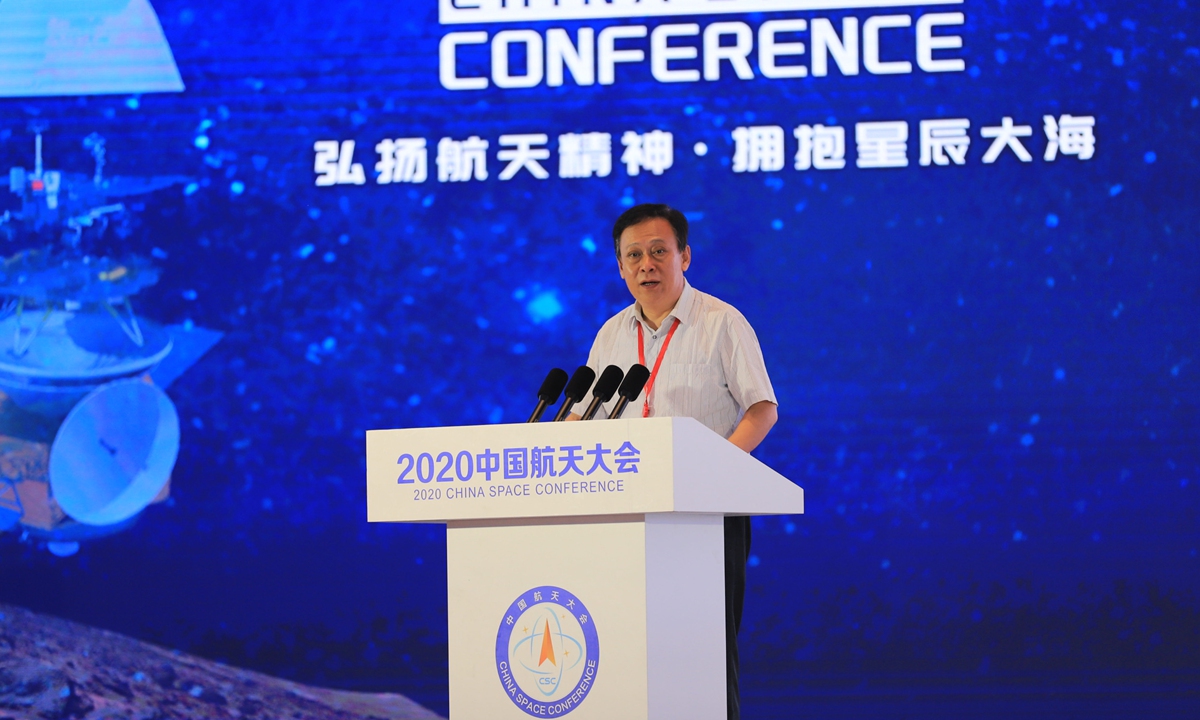Manned rocket development a pressing issue for nation’s moon landing mission: deputy chief designer
By Deng Xiaoci in Fuzhou Source: Global Times Published: 2020/9/18 22:41:34

Zhou Yanfei, deputy chief architect of the China manned space program Photo: Deng Xiaoci/GT
China is pressing ahead with the research and development of a crewed heavy-lift carrier rocket, whose launch capability would reach 70 tons to the Low Earth orbit (LEO) and 27 tons to the Lunar Transfer orbit (LTO), according to a tentative roadmap for the country's future moon landing strategy unveiled on Friday by Zhou Yanfei, deputy chief designer of the China manned space program.
None of the existing members of China's Long March carrier rocket family could allow the country to achieve such an ambitious manned moon landing mission, Zhou said during his keynote speech at the China Space Conference on Friday, adding that the development of a new heavy-lift manned carrier rocket is among other challenges in reaching the goal.
The new rocket will be able to carry a manned spaceship and lunar lander into the LTO, and it will feature a modular design to enable flexibility of expansion, Zhou said.
Taking the large scale of the new heavy-lift carrier rocket into consideration, China's space authorities may select the Wenchang Space Launch Center in South China's Hainan Province as a launch site, and could designate the return site on land or at sea.
The current Shenzhou manned spacecraft is designed for LEO missions, so it cannot be tasked with moon landing, Zhou noted, so a new manned lunar lander will be necessary.
Zhou also listed the technical challenges in such a project. The lack of survival experience on an extraterrestrial body adds to the difficulty, he said.
A manned space lab deployed to the moon that is able to support multiple astronauts in their days-long lunar exploration activities is also part of the tentative roadmap.
China has made four successful unmanned probe missions to the moon so far with zero failures, including the Chang'e-4 soft landing on the far side of the moon at the beginning of 2019, the first in human history.
China plans to take another flight to the moon with the Chang'e-5 lunar probe, aiming to bring lunar samples back to Earth. This could be launched before the end of this year, Yu Dengyun, deputy chief architect of China's moon exploration program, said on Friday at the conference, which was held in Fuzhou, East China's Fujian Province.
Posted in: SOCIETY